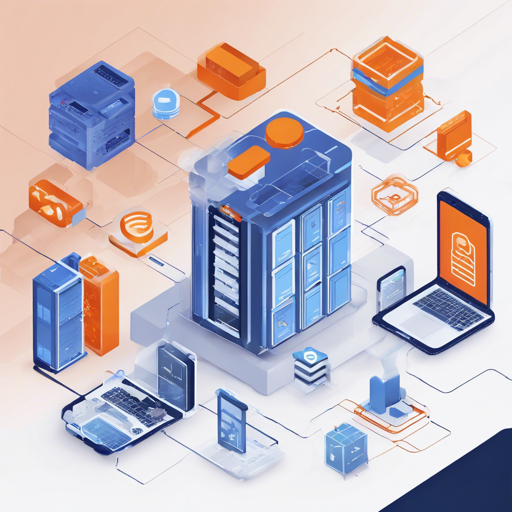In the rapidly changing world of cloud-based applications, adopting DevOps practices is essential. This guide will walk you through implementing DevOps practices using AWS Elastic Container Service (ECS) with the help of AWS Cloud Development Kit (CDK). Whether you’re new to cloud development or looking to streamline your processes, this article will serve as your roadmap.
Understanding the Core Concepts
Before we dive into the implementation, let’s break down some essential practices that form the bedrock of our solution:
- Micro-Service Architecture (MSA): A pattern that structures your application as a collection of loosely coupled services.
- Infrastructure as Code (IaC): Managing and provisioning infrastructure through code instead of manual processes.
- Continuous Integration/Continuous Deployment (CICD): Automating the integration and deployment processes to increase release speed and reliability.
- Monitoring Dashboard: Tools to monitor application performance and system health, ensuring everything runs smoothly.
- Configuration Management: Keeping your configuration separate from code to maintain clarity and avoid errors.
Setting Up Your Environment
To build your AWS ECS application with CDK, follow these steps:
1. Prerequisites
Ensure you have the following installed and configured:
- AWS Account and IAM User
- AWS CLI by running:
aws configure --profile [profile name] - Node.js – Check version:
node --version - AWS CDK – Check version:
cdk --version - jq – Check version:
jq --version
2. Configure AWS Credentials
Next, configure your AWS credentials:
aws configure --profile [your-profile]
AWS Access Key ID [None]: xxxxxx
AWS Secret Access Key [None]: yyyyyyyyyyyyyyyyyyyyyyyyyyyyyyy
Default region name [None]: ap-southeast-1
Default output format [None]: json
3. Check Launch Configuration
Ensure that your cdk.json file is set up properly. The entry point should be infra/app-main.ts.
4. Setting Up Deployment Configuration
Configure your deployment settings in config/app-config-demo.json. Make sure you adjust the settings per your environment:
{
"Project": {
"Name": "EcsProject",
"Stage": "Demo",
"Account": "75157*******",
"Region": "ap-southeast-1",
"Profile": "cdk-demo"
}
}
5. Install Dependencies and Bootstrap
Run the installation script to install necessary modules:
bash sh scripts/setup_initial.sh config/app-config-demo.jsonDeploying Your Application
Your project comprises several stacks, each responsible for a different part of your infrastructure:
- EcsProjectDemo-VpcInfraStack: Sets up the required VPC, ECS Cluster, and CloudMap Namespace.
- EcsProjectDemo-SampleBackendFastapiStack: Manages backend services.
- EcsProjectDemo-SampleFrontendFlaskStack: Manages frontend services.
- EcsProjectDemo-LoadTesterScriptStack: Handles internal testing.
To deploy the stacks, execute:
bash sh scripts/deploy_stacks.sh config/app-config-demo.jsonTesting Your Infrastructure
After deployment, validate your setup:
Frontend Test
Access the frontend via the Load Balancer’s DNS. You can find this information in the outputs following the deployment:
Outputs:
EcsProjectDemo-EcsAlbStack.EcsAlbInfraConstructServiceLoadBalancerDNS = EcsPr-EcsAl-1TNJ82PAWJ4IV-1937786873.ap-southeast-1.elb.amazonaws.com
A successful connection will display a sample webpage. Meanwhile, you can monitor performance metrics via the CloudWatch dashboard.
Backend Test
As the backend is accessible internally only, use the Load Tester Script Stack to evaluate performance:
curl -X GET $URL_ALB
ab -n $RequestCount -c 1 $URL_ALB
Troubleshooting
If you run into issues during deployment or testing, consider the following solutions:
- If you encounter permission errors, double-check your IAM user’s permissions and role assignments.
- For issues with CloudFormation, navigate to the AWS Management Console to investigate the stack events for error messages.
- If the CDK commands do not execute as expected, verify your installation of Node.js and AWS CDK.
For more insights, updates, or to collaborate on AI development projects, stay connected with fxis.ai.
Conclusion
By implementing these practices using AWS ECS and CDK, you position your development team for success. Leveraging the capabilities of CDK allows you to efficiently manage your infrastructure as code, paving the way for quicker deployments, easier management, and improved scalability.
At fxis.ai, we believe that such advancements are crucial for the future of AI, as they enable more comprehensive and effective solutions. Our team is continually exploring new methodologies to push the envelope in artificial intelligence, ensuring that our clients benefit from the latest technological innovations.

